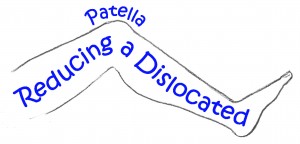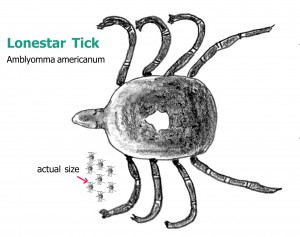Recently, I (Frank) had the delightful opportunity to spend several days with Gordon and Murray as we taught together at the Northern NH EMS Conference and the Harry McDade Hypothermia Conference. As usual we took great joy in the opportunity to discuss current research, current classroom information, and a variety of rescues involving hypothermia and other cold-related injuries. We recognize that even though there is abundant scientific information, there are still many old wives’ tales and misinformation that are being taught, passed on, and utilized in patient care. There appears to be some bad data in education which is causing rescuers to provide inappropriate patient care that can be deleterious to their patients. So, we decided to take a look at the many myths and misinformation that seem to surround cold physiology and cold-related injuries.
November/December 2004 ISSN-1059-6518 Volume 17 Number 6
September/October 2004 ISSN-1059-6518 Volume 17 Number 5
By Frank Hubbell, DO
A relatively common sports injury, a dislocated patella typically occurs when a force is applied to the medial side of the patella forcing it laterally out of the femoral groove in which it rides. The groove, produced by the femoral condyles of the patella, is held in place inferiorly by the patella tendon and supported on the sides by the medial and lateral patella femoral ligaments.
Like the deer tick, Ixodes, that spreads Lyme Disease, the Lonestar tick is also a very small brownish tick but with a white spot, or “star” in the center of its back.
Anyone who develops a suspicious rash and has been exposed to ticks or has had a tick bite should see their primary care provider for appropriate testing and treatment. The Center for Disease Control (CDC) recommends that anyone with a tick bite from a deer tick, Lonestar tick, or other suspicious tick should take a single dose of doxycycline 200mg once as prophylaxis against these illnesses.
It’s early fall over northern Michigan; a beautiful time of year to go paddling. The leaves are changing, the air is turning crisp, early morning fog envelops the ponds and rivers, and the smell of wood smoke accents the air. After several days of paddling you find yourself and several friends well into the boundary waters of northern Michigan. That evening the crew whips up their famous pot of chili; hot, spicy, and a lot of it. While enjoying another mouthful, you bite down on what is supposed to be a pinto bean, but instead it turns out to be a small stone that made its way into the pot. Suddenly you feel the sharp crunch of a tooth breaking and the intense pain of an exposed nerve. Your stare down at the chunk of tooth in your hand as your jaw starts to throb. You’re miles from the nearest road, it’s dark, and none of your friends are dentists. Okay, now what?
September/October 2004 ISSN-1059-6518 Volume 17, Number 5
Frozen Mythbusters
/in Cold Injuries, Environemtal Injuries, Frostbite, Hypothermia/by WMN EditorsRecently, I (Frank) had the delightful opportunity to spend several days with Gordon and Murray as we taught together at the Northern NH EMS Conference and the Harry McDade Hypothermia Conference. As usual we took great joy in the opportunity to discuss current research, current classroom information, and a variety of rescues involving hypothermia and other cold-related injuries. We recognize that even though there is abundant scientific information, there are still many old wives’ tales and misinformation that are being taught, passed on, and utilized in patient care. There appears to be some bad data in education which is causing rescuers to provide inappropriate patient care that can be deleterious to their patients. So, we decided to take a look at the many myths and misinformation that seem to surround cold physiology and cold-related injuries.
November/December 2004 ISSN-1059-6518 Volume 17 Number 6
Read more
Reducing a Dislocated Patella
/in Dislocations, Musculoskeletal/by WMN EditorsSeptember/October 2004 ISSN-1059-6518 Volume 17 Number 5
By Frank Hubbell, DO
A relatively common sports injury, a dislocated patella typically occurs when a force is applied to the medial side of the patella forcing it laterally out of the femoral groove in which it rides. The groove, produced by the femoral condyles of the patella, is held in place inferiorly by the patella tendon and supported on the sides by the medial and lateral patella femoral ligaments.
Read more
STARI
/in Disease, Rash/by WMN EditorsSeptember/October 2004 ISSN-1059-6518 Volume 17 Number 5
Tales of the Tapeworm
By Dr. E.C. Oli
STARI
Southern Tick-Associated Rash Ilness (Borellia lonestari)
Like the deer tick, Ixodes, that spreads Lyme Disease, the Lonestar tick is also a very small brownish tick but with a white spot, or “star” in the center of its back.
Anyone who develops a suspicious rash and has been exposed to ticks or has had a tick bite should see their primary care provider for appropriate testing and treatment. The Center for Disease Control (CDC) recommends that anyone with a tick bite from a deer tick, Lonestar tick, or other suspicious tick should take a single dose of doxycycline 200mg once as prophylaxis against these illnesses.
Read more
Managing Backcountry Dental Emergencies
/in Dental Emergencies, First Aid Kits, Teeth/by WMN EditorsIt’s early fall over northern Michigan; a beautiful time of year to go paddling. The leaves are changing, the air is turning crisp, early morning fog envelops the ponds and rivers, and the smell of wood smoke accents the air. After several days of paddling you find yourself and several friends well into the boundary waters of northern Michigan. That evening the crew whips up their famous pot of chili; hot, spicy, and a lot of it. While enjoying another mouthful, you bite down on what is supposed to be a pinto bean, but instead it turns out to be a small stone that made its way into the pot. Suddenly you feel the sharp crunch of a tooth breaking and the intense pain of an exposed nerve. Your stare down at the chunk of tooth in your hand as your jaw starts to throb. You’re miles from the nearest road, it’s dark, and none of your friends are dentists. Okay, now what?
September/October 2004 ISSN-1059-6518 Volume 17, Number 5
Read more